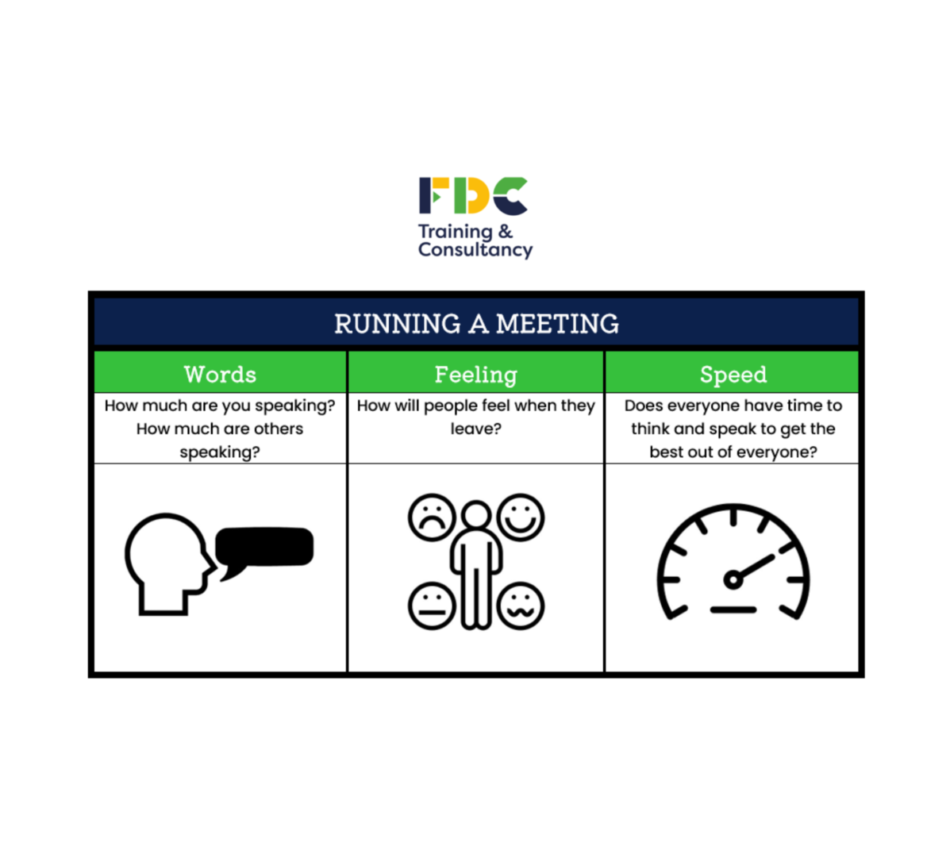Authored by Mark West
Introduction:
“Earlier this year (2022), I attended a six-day, intensive teacher training course with a half day long exam at the end. The focus of the course was on teaching adults physical movement. Upon achieving a merit, it left me thinking about what was learned beyond my existing knowledge (being a Qualified Teacher and having a Leadership and Management diploma).
In terms of teaching and learning, nothing was new but it refined and refreshed my thinking about working with adults in a staff meeting. There are three key areas of how to conduct a meeting…”
Want the short three-minute version? Here’s a quick read summary:


Curious to find out more? Read on for the 10-minute version:
These three aspects of running a meeting are brought to the forefront as they were points of development for the six-day course. They are not a comprehensive list by any means.

If the person leading the meeting is using less words, then you increase the chance of the staff becoming active in the meeting, bringing their ideas and creating ownership. Ownership is a crucial part of change1. If your staff are new to meetings or new to talking within your specific grouping, do some activities to get their ‘voice in the room’. Get them used to talking in front of each other, consider a fun game. Then when the meeting is more serious, they are more likely to contribute.

How people feel about a meeting if more important than what was said or agreed. This feeling is usually created at the beginning and end of a meeting. Providing snacks at the start is a quick and easy positive start. You can also start with celebrations, praise or positive sharing to ensure you start on a positive – even better, use less words and get your staff to praise and celebrate.
Do not let a meeting end with a down beat, overhanging, unsolved or unactionable problem – no agenda item should be ended in this way. Plan for the last agenda item to lift the ending mood. There are many ways to do this such as ending on a group problem-solving agenda item, one that sits in the Green Growth zone (see previous blog). People feel involved, included and happy that they have dealt with a problem and leave with hope for change and improvement.

Consider the speed and timing. Look at your staff. Are there signs that they are thinking about a question you asked? You must be comfortable with silence. Try now sitting in silence and time seven seconds on your phone imagining yourself in a meeting. That is how long you should be comfortable with as a minimum. It allows thinking time to get the best answers out of those who need longer. Remember, faster thinking speed does not equal quality of answer and thought.
Lastly, an additional fourth and final point is to get feedback on your meetings and discuss how people would like meetings to be. Yes, a meeting about meetings. Why not? It was one of the most powerful meetings I have facilitated in a Primary School. Staff ended up wanting three meetings on it. We created a ‘meeting agreement,’ focused on all those participating, regardless of whether you were leading it or not. I returned several years later to find it still being used and displayed in the staffroom. It goes to show how giving up this time can create further impact later. It establishes, ‘how we do meetings here.’
If you would like an example of what to include in a meeting agreement, email us at here and we’ll send over an example.
Twitter: @MarkWest_Teach
LinkedIn: Mark West
References and subnotes:
Ownership being a key component of educational change. Fullan, M. The New Meaning of Educational Change, 4th Ed. (2009)
